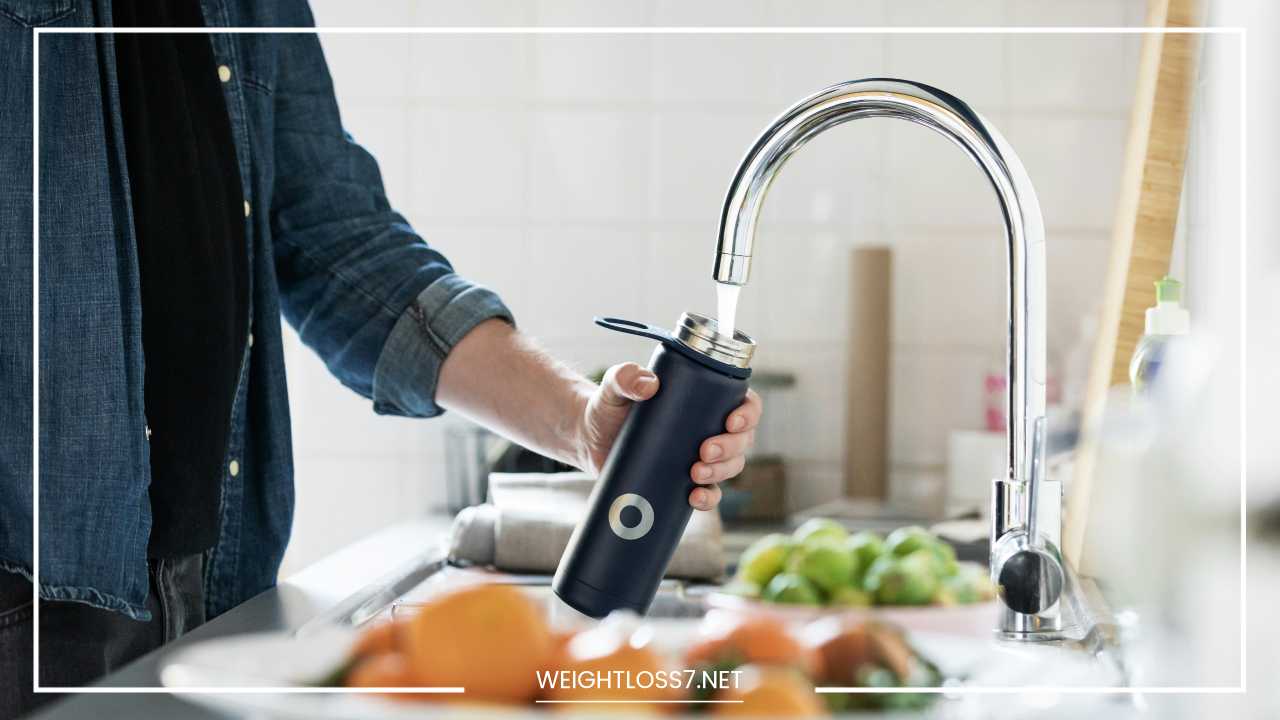Tap Water: Is Tap Water Safe to Drink?

Tap Water
The Humble Hero: Unveiling the Power of Tap Water
We turn it on without a second thought, filling glasses, washing dishes, and showering in its refreshing flow. Tap water, a seemingly ordinary part of our daily lives, holds a powerful story within its unremarkable presence.
It’s a testament to human ingenuity, a cornerstone of public health, and a sustainable resource in a world increasingly focused on environmental responsibility.
Let’s delve deeper into the world of tap water, exploring its fascinating journey from source to tap, the science behind its meticulous safety standards, and the compelling environmental benefits of choosing it over bottled water.
A Global Journey: Unveiling the Diverse Sources of Tap Water
The path your tap water takes varies depending on your location, but the general process involves several key steps. Understanding these diverse sources paints a vivid picture of the global effort behind delivering this essential resource:
-
Surface Water: Rivers, lakes, and reservoirs are the most common sources of tap water in densely populated areas. They offer readily available water, but may require more extensive treatment due to potential contamination from runoff, agricultural practices, or industrial activity.
-
Groundwater: Aquifers, naturally occurring underground layers of rock or sand that store water, provide a source of filtered water that has passed through the earth. Groundwater often requires less treatment than surface water, but its availability can be limited in certain regions.
-
Desalination: In coastal regions facing water scarcity, desalination plants remove salt from seawater, making it suitable for human consumption. This technology is becoming increasingly important due to climate change and population growth.
-
Springs: Natural springs, where groundwater emerges from the earth’s surface, can be a source of tap water in some areas. Spring water often requires minimal treatment due to its natural filtration through rock formations.
-
Rainwater Harvesting: Collecting rainwater from rooftops or other surfaces can be a sustainable source of tap water, particularly in areas with high rainfall. However, rainwater harvesting systems typically require sophisticated filtration to ensure water quality.
The specific sources utilized depend on factors like geography, population density, and infrastructure. Understanding this diversity highlights the complex task of managing water resources to deliver safe and reliable tap water to communities worldwide.
From Source to Tap: A Multi-Layered Approach to Water Treatment
The journey of water from its source to your faucet involves a multi-stage treatment process designed to remove contaminants and ensure its safety for human consumption. Here’s a closer look at the science behind this critical step:
-
Pre-Treatment: At the intake point, initial screening may remove large debris like leaves or branches to protect treatment facilities.
-
Coagulation and Flocculation: Chemicals are added to cause suspended particles, such as dirt, clay, and organic matter, to clump together. These clumps, called flocs, are easier to remove in subsequent stages.
-
Sedimentation: The flocs settle out of the water due to gravity in large tanks. This process removes a significant amount of contaminants.
-
Filtration: Water passes through various filters, such as sand, gravel, or membranes, to remove remaining particles, microorganisms, and any residual flocs.
-
Disinfection: Chlorine or other disinfectants like ultraviolet light are added to kill or inactivate bacteria, viruses, and other pathogens that may be present. Chlorine is the most common disinfectant due to its effectiveness and cost-effectiveness.
-
Additional Treatments: Depending on the source water and local regulations, additional treatments may be included. These might involve:
- Fluoridation: Fluoride is added to many public water supplies to promote dental health by strengthening tooth enamel and reducing cavities.
- pH Adjustment: Water with a high or low pH can be adjusted to a neutral range to improve taste and prevent corrosion of pipes.
- Softening: In areas with hard water (high mineral content), water softening processes can be used to reduce scale buildup in pipes and appliances.
-
Storage: Treated water is stored in reservoirs to ensure a consistent supply that meets peak demand periods.
-
Distribution: A vast network of pipes, often made of cast iron, PVC, or concrete, carries the treated water to homes and businesses. Maintaining this infrastructure is crucial for ensuring the quality and reliability of tap water delivery.
This multi-layered treatment process, overseen by public health agencies and water treatment professionals, is what guarantees the safety and potability of the water that flows from our taps.
Unveiling the Science: A Deep Dive into Tap Water Safety
Concerns about tap water quality are common. However, rigorous testing and regulations ensure it’s a safe and reliable source of drinking water.
Public health agencies like the Environmental Protection Agency (EPA) in the US or the World Health Organization (WHO) set strict standards for drinking water quality. Regular testing monitors for potential contaminants like:
-
Microbiological Contaminants: Bacteria, viruses, and parasites can cause waterborne illnesses like diarrhea, vomiting, and cramps. Rigorous disinfection processes like chlorination effectively eliminate these harmful microorganisms.
-
Inorganic Contaminants: These include naturally occurring minerals like arsenic, lead, and mercury, or industrial waste byproducts. The EPA and similar agencies set maximum contaminant levels (MCLs) for these substances, ensuring their presence is minimal and poses no health risk.
-
Organic Contaminants: These can include pesticides, herbicides, and byproducts of industrial processes or disinfection. Treatment processes and regulations aim to minimize these contaminants, and many are undetectable in tap water.
-
Emerging Contaminants: Pharmaceuticals, personal care products, and microplastics are emerging concerns. Research is ongoing to understand their potential impact and develop effective treatment methods.
While localized issues with tap water quality can arise due to aging infrastructure or accidental contamination, public health agencies work diligently to address these concerns and communicate any necessary precautions to the public.
If you have specific anxieties about your tap water, contacting your local water utility or public health department is a great first step.
They can provide information on water quality testing in your area and address any specific concerns you may have.
The Environmental Hero: Why Choose Tap Water Over Bottled Water?
Plastic pollution is a global crisis. Every year, millions of tons of plastic bottles end up in landfills and oceans, harming wildlife and ecosystems.
Choosing tap water over bottled water is a simple yet impactful way to reduce your plastic footprint and contribute to a more sustainable future. Here’s why tap water is a clear environmental winner:
-
Reduced Plastic Waste: Bottled water production requires a significant amount of plastic, contributing to plastic waste and pollution. A single-use plastic water bottle can take hundreds of years to decompose, and many end up in landfills or our oceans, where they can harm wildlife and pollute the environment.
-
Lower Energy Consumption: The production, transportation, and cooling of bottled water require significant energy consumption. Choosing tap water eliminates these energy-intensive steps, reducing your overall environmental footprint.
-
Local and Sustainable: Tap water is sourced and treated locally, minimizing transportation needs and the associated environmental impact. Bottled water, on the other hand, can travel long distances before reaching store shelves, contributing to greenhouse gas emissions.
In addition to the environmental benefits, tap water is also:
-
Cost-Effective: Bottled water can be significantly more expensive than tap water. Choosing tap water saves you money and reduces your reliance on a commercially produced product.
-
Convenient: No need to buy, store, or recycle bulky plastic bottles. Tap water is readily available and eliminates the hassle associated with bottled water.
Making the switch to tap water is a simple yet impactful way to live a more sustainable lifestyle.
Beyond Convenience: Optimizing Your Tap Water Experience
While tap water is a safe and readily available resource, some may find its taste unappealing or desire additional filtration options. Here are some tips to enjoy the benefits of tap water to the fullest:
-
Invest in a Reusable Water Bottle: Choose a reusable water bottle you enjoy using to stay hydrated throughout the day. Opt for BPA-free, insulated bottles to maintain water temperature and avoid the need for disposable plastic bottles.
-
Improve the Taste: If you find the taste of tap water unappealing, consider these options:
- Filtration: Pitcher-style filters or faucet-mounted filters can remove chlorine and other taste-altering elements.
- Natural Flavoring: Add a slice of lemon, cucumber, or other fruit to your water for a refreshing twist. Opt for organic produce whenever possible to minimize pesticide residue.
- Chilled Water: Keeping a pitcher of water in the refrigerator ensures a refreshing and readily available source of cool tap water.
-
Support Your Local Water Infrastructure: Advocate for continued investment in maintaining and improving water treatment facilities. This ensures safe and reliable tap water for your community and future generations.
By making informed choices and supporting local water infrastructure, we can ensure that tap water remains a readily available, sustainable, and healthy resource for all.
Final Word: A Toast to the Humble Hero
Tap water, often taken for granted, is a testament to human ingenuity. The complex infrastructure and rigorous treatment processes behind our everyday tap water are a marvel of modern engineering. It’s a cornerstone of public health, ensuring clean drinking water for communities worldwide.
Choosing tap water over bottled water is a simple yet impactful way to reduce your environmental footprint and embrace a more sustainable lifestyle.
So, the next time you turn on the tap, take a moment to appreciate this humble hero – a symbol of human innovation, public health, and environmental responsibility. Let’s raise a glass (of tap water, of course!) to this vital resource that sustains our life.
The Ripple Effect: A Call to Global Action
The story of tap water extends far beyond our individual faucets. It’s a global narrative of shared resources, responsible management, and the interconnectedness of our planet. Here’s how we can leverage the power of tap water to create positive ripples across the world:
-
Investing in Global Water Infrastructure: Millions around the world lack access to safe drinking water. Supporting organizations working on water infrastructure development projects in developing countries can make a significant impact on public health and well-being.
-
Promoting Water Conservation: Water scarcity is a growing concern in many regions. Simple practices like taking shorter showers, fixing leaky faucets, and watering lawns efficiently can collectively conserve this precious resource.
-
Educating Consumers: Spreading awareness about the safety and environmental benefits of tap water can empower individuals to make informed choices and reduce their reliance on bottled water. Educational campaigns and community initiatives can play a crucial role in shifting consumer behavior.
-
Supporting Sustainable Water Management Practices: Agricultural practices, industrial processes, and urban development can all impact water quality and availability. Advocating for sustainable water management policies and supporting companies that prioritize responsible water use can create a positive systemic change.
-
Holding Governments Accountable: Governments play a critical role in regulating water quality, managing resources, and investing in infrastructure. Holding them accountable for upholding environmental regulations and ensuring equitable access to safe drinking water is crucial for a sustainable future.
By taking action on these fronts, we can turn the tide on water insecurity and pollution. Tap water, once seen as a simple commodity, can become a powerful symbol of global cooperation and environmental responsibility.
A Toast to the Future: Embracing a Water-Wise World
As we move towards a future with a growing population and a changing climate, ensuring access to safe and sustainable water resources is paramount.
Tap water, with its inherent advantages, can play a pivotal role in achieving this goal. By appreciating its value, advocating for responsible management, and making informed choices, we can all contribute to a water-wise world.
So, let’s raise a glass (of tap water, naturally) to a future where this essential resource remains readily available for generations to come.
This expanded version of the blog post on tap water delves deeper into the various sources, the science behind its treatment, and the compelling reasons to choose it over bottled water.
It also explores the broader implications of tap water in a global context and highlights ways we can all contribute to a more sustainable future.
By understanding and appreciating the power of tap water, we can move towards a future where this essential resource is valued, protected, and readily available for all.

















